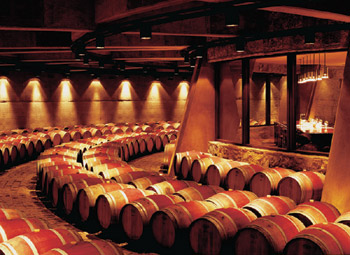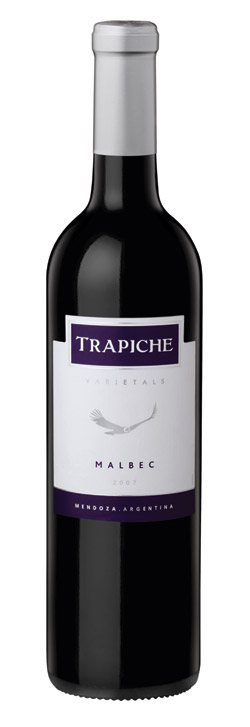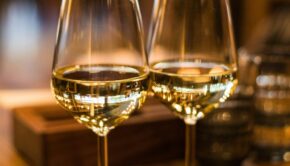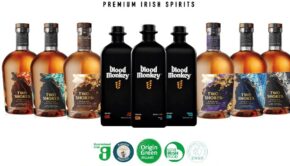Argentina

Financial crisis is nothing new to Argentina. They had their own horror at the beginning of the decade and although this new tsunami is hardly welcome, they are probably better equipped to face it than some of us
12 January 2009
Due to the break with the US dollar, the lower value of the Argentine peso meant US wine sales quadrupled in profit value.
And there were benefits against currencies such as sterling and the euro as well.
This meant there was more cash to invest in wineries and producers took full advantage of that.
From 2002 to 2006, Argentine wine exports to the US doubled and globally exports rose by around 20% annually in volume, and 30% in value at FOB rates.
By 2007, a quarter of all bottled Argentine wine went to the US, the European market was growing and hugely profitable, and wineries were stretched to full capacity to keep up with demand.
In that year exports reached 173,600,000 litres, with Argentina the fifth largest producer in the world. Astonishingly, 75% of production is still drunk domestically.
Downturn inevitable for Argentina
It’s inevitable that things will falter a bit now. Bulk sales to Russia, a vital outlet for Argentina’s basic wines, were already under pressure in 2007, especially from South Africa, which had a lot of surplus wine and a freshly devalued currency.
Brazil is a vital market and is slowing down, European consumers are already known to be trading down sharply, while restaurants everywhere will be affected by what economists are calling the poverty factor.
When people feel poorer they eat out less and order cheaper wine. That will impact on Argentina which has put a lot of energy lately into developing premium labels for the on-trade.
It’s not the easiest time for Angel Vespa, newly elected president of Bodegas de Argentina. But his early statements have been positive and he has declared that one of his first tasks will be to increase the number of markets that Argentina can enter without tariffs.
He sees the promotion of wine tourism as an important way of raising global consciousness of the quality of Argentina’s wines and feels that Argentina’s great strength is the ready ability to deliver soundly at all price points.
As one producer said lately: "You can produce fine wine more cheaply in Argentina than anywhere else in the world." Right now, Argentina has a strong currency advantage over its closest competitors in the bottled sector, Chile and Australia, and this will stand to it as global sales by value start to fall.
Quality greatly improved
But it’s not all about money. The quality of Argentina’s wines has improved vastly since the late 1990s. Malbec, long touted as the signature grape, was too often four square and lacking in acidity.
Better site and clone selection, along with a surge in winery investment, is resulting in much better structured, fresher wines, which are worthy of their image as a national trademark.
The challenge for retailers will be to persuade customers to cease seeing malbec as budget red and to persuade them that trading up to a few euros more will get them wines better worth the price than the cheapies.
The white torrontes has been a bit of a disappointment as, although it has lovely floral aromatics, efforts to raise acidity and intensity in the wines haven’t always been successful. But chardonnay has been making great strides and sauvignon blanc is appearing, as Argentina begins to exploit cooler, higher vineyard sites.
Among top areas for wines of finesse are Cafayete (part of the Salta region in Mendoza), Catamarca, Uco Valley, Tupungato and the newly emerging southern cool climate region of Patagonia. From the latter we are beginning to see decent pinot noir and malbecs which have a fine nerviness not often associated with this variety.
Cabernet has tended to play second fiddle to malbec amongst reds. Too often in the past, it was grown in low lying, warm sites which resulted in clunky, low acid wines.
That is changing rapidly and many producers see a great future for Bordeaux style blends now that more suitable sites have been identified. Plantings are still less than 19%, compared with 25% for malbec, but I think we can expect cabernet to expand noticeably over the coming decade.
So it’s a good time to try Argentina; its price-quality ratio is among the best in the market and that will certainly appeal to cash strapped consumers. But drinkers who haven’t sampled Argentina for a while may be surprised to discover how much better it is than they remember, especially malbecs and cabernets. Here’s some of what we’ve tasted lately. Prices are trade.
WHITES
Michel Torino Sauvignon Blanc 2006/7 (Classic Drinks €6.50). Here’s one of those sauvignon blancs I mentioned, from Cafayete. Fresh, zingy and well balanced
Finca La Linda Viognier 2007 (Searsons €10.40). Rich and lush with lots of floral and apricot elements, yet with sufficient balancing acidity. Perfect with Thai curry
Argento Chardonnay 2007 (Cassidy €6.30). Simple good value in a lightly oaked, fresh, pleasantly concentrated wine, which would go well with monkfish or chicken
Alamos Catena Zapata Sauvignon Blanc 2007 (Cassidy €8.25). Good fruit definition and zesty acidity characterise this easy number
Catena Chardonnay 2006 (Cassidy €11.50). Solidly delivers on premium price; if you’ve still got a turkey in the freezer, this could be the one to serve with it
Finca La Celia La Consulta Pinot Grigio 2007 (Febvre E7.75). Not bad at all with its Granny Smith apple fruits, floral touches and decent finish
Michel Torino Coleccion Torrontes 2007 (Classic €6.50). Easy, floral stuff with touches of peach and lychee. Good aperitif and nibble wine
Trivento Tribu Viognier 2007 (Findlater Grant €8). Florals and peaches again but with some refreshing acidity; a decent aperitif and first course wine at a fair price
Dona Paula Estate Chardonnay 2006 (Woodford Bourne €10). Up and coming estate which has cut waves among the trendier US commentators. Good stuff, though, with solid citrus underpinned by some creamy elements; good with roast pork
Terazzas Alto Chardonnay 2004 (Dillon €9). Solidly made, with light toasty hints to nicely defined lemon and a little hint of melon. Good wine for heartier fish dishes
 REDS
REDS
Finca La Celia Cabernet Franc Reserva (Febvre €10.40). Tasty, fresh blackcurrants and a hint of ripe, red apple make this a great wine for cold meat buffets and it’s very good with roast lamb
Catena Malbec 2006 (Cassidy€11.50). One of those higher altitude malbecs which prove that it can pay to spend a few euro more. Firm sloe, damson and plum flavours in decent structure; a lovely wine for beef or venison
Michel Torino Coleccion Cafayete Pinot Noir 2006 (Classic Drinks €7.50). Approachable style but clean and well made with tasting summer fruits; good value
Michel Torino Coleccion Cabernet Sauvignon 2006 (Classic €6.50). Good value cabernet with blackcurrant and plum flavours. Great choice for a steak and kidney pie
Navarro Correas Collection Malbec 2005 (Gilbey €8.25). Damson and blackcurrant flavours with a lick of dark spice. Try with Peking duck
Michel Torino Coleccion Malbec 2006 (Classic €6.50). Black plum and damson flavours and good for all roast meats
Terrazzas Alto Malbec 2006 (Dillon €9). Plum and damson once more, this time laced with a tasty mocha streak. Would be lovely with venison, roast duck or traditional spiced beef
Trapiche Oak Cask Malbec 2005 (Comans €6.50). Generous, brambly fruit beneath the plum- try this with a shepherd’s pie
Sauras Merlot Patagonia Select 2004 (Bowes €8). Cool climate style but with properly ripened fruit. Fresh plum and blackcurrant with decent structure and fine acid balance; elegant, beautifully textured wine
Finca La Celia Syrah Reserva 2005 (Febvre €10.40). Not quite as savoury as French syrah, yet showing restraint compared to some big and spicy New World expressions. Blackberry, blackcurrant and plum are the flavours; a natural for game or roast beef



 Print
Print






Fans 0
Followers